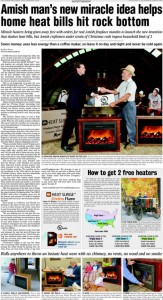I did a workshop last week for the DMA on social media. It was called “I’m on Twitter and Facebook, now what? How to REALLY put social media to work for your business.” The premise is that a lot of businesses jumped into social media marketing in 2009 without really thinking through what it was all about, and 2010 is the year they’ll now get analytic and practical about it.
In fact, I found that a lot of attendees are using social media, especially Twitter, to promote their businesses. They are tweeting offers, news related to their products, and links of interest to their market. Yet few of these marketers said they regularly use Twitter themselves. I think you need to walk the walk: you can’t effectively use the medium unless you invest time in participating in the user experience by being a user.
Meanwhile, almost nobody including me was paying proper attention to Facebook. This is dangerously short sighted. Facebook is amazingly successful, approaching 400 active million users of whom 50% sign on every day. A single Facebook application, Farmville, has more users than Twitter. But Facebook seems so consumer focused that many of the business marketers in the room can’t take it seriously.
The other thing is that, while Twitter is easy to play around with, Facebook is very rigid in what you can and can’t do. Twitter is the PC (or maybe the Unix workstation), Facebook is the Mac. It’s their way or the highway. But the “page” tools (used to build what used to be a “fan page”) and Ad Manager are so easy to use it is a low time investment to try them out.
Nielsen reported that 13% of 2010 Winter Olympics viewers were online while watching the competitions, and of those 40% were “Facebooking”. That is a term I first heard during the Super Bowl when the hostess of the party we attended was disappointed my wife hadn’t brought her laptop so they could Facebook with their friends about what snacks were being served, how boring the game was etc. Of course your could do this on Twitter but why? On Facebook you’re among a cozy circle of friends and there’s no 140 cc limit.
The PowerPoint of my DMA workshop is available here. Look at it in slide view mode, because almost every image is a clickable hyperlink.
